
|
Great outburst occured on Oct. 24, 2007, and it bacame a naked eye comet of 2 mag. It kept so bright as 5.5 mag still on Apr. 30 (Carlos Labordena), but it was extremely faint and difficult to see. The size was so large, the diameter was larger than 60 arcmin. Now appearing in the morning sky, but still low. It will become observable in good condition in autumn again. The extremely faint large diffuse object may be detected with a best sky condition, around 5-6 mag with a diameter of 1 or 2 degrees. Now the nuclear brightness is 18.6 mag (Sept. 14, Gustavo Muler).
Date(TT) R.A. (2000) Decl. Delta r Elong. m1 Best Time(A, h)
Sept.13 8 38.05 28 4.1 4.400 3.779 46 6.1 4:38 (235, 0)
Sept.20 8 45.10 27 37.7 4.347 3.805 51 6.1 4:28 (234, 2)
|

|
Now it is 6.3 mag (Sept. 4, Marco Goiato). Now it is brightest, and it keeps 6.5 mag until early October. In the Northern Hemisphere, it is not observable now. It will appear in the evening sky at 7 mag in ealy October, but it keeps locating in the evening low sky until the end of 2008 when it fades out down to 10 mag. Then it turns to appear in the morning sky, and it keeps observable in the northern sky after that while fading gradually. In the Southern Hemisphere, it is only observable until late October.
Date(TT) R.A. (2000) Decl. Delta r Elong. m1 Best Time(A, h)
Sept.13 13 50.03 -38 16.8 1.345 1.106 53 6.6 19:13 ( 64, 33)
Sept.20 14 29.68 -33 17.9 1.386 1.084 50 6.6 19:19 ( 70, 32)
|

|
Now it is 8.5 mag (Sept. 5, Marco Goiato). Now it is brightest, expanding the large coma. It keeps bright as 9 ma until late October. In the Northern Hemisphere, it becomes low in the south at brightest, but it keeps observable until it fades out.
Date(TT) R.A. (2000) Decl. Delta r Elong. m1 Best Time(A, h)
Sept.13 21 21.69 -36 37.6 0.480 1.394 136 8.5 21:52 ( 0, 88)
Sept.20 21 39.91 -38 21.5 0.529 1.416 132 8.4 21:42 ( 0, 87)
|
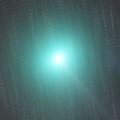
|
It became so bright as 4.7 mag, and so large as 20 arcmin in June (June 12, Marco Goiato). Now it is fading. But it is still bright as 10.6 mag (Sept. 9, Seiichi Yoshida). It keeps observable in good condition for a long time after this. It will be visible visually until around November.
Date(TT) R.A. (2000) Decl. Delta r Elong. m1 Best Time(A, h)
Sept.13 1 44.38 23 47.6 0.740 1.624 136 10.4 2:17 (180, 31)
Sept.20 1 29.95 23 23.9 0.791 1.716 145 10.8 1:35 (180, 32)
|
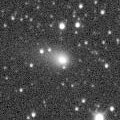
|
Now it is 10.8 mag (Sept. 7, Alexandre Amorim). Very small, and strongly condensed. It is expected to reach to 6 mag in 2009 February. It keeps observable until October. It will be unobservable temporarily in November, but it will appear in the morning sky again at 9 mag in late December.
Date(TT) R.A. (2000) Decl. Delta r Elong. m1 Best Time(A, h)
Sept.13 16 58.59 -21 14.3 1.963 2.130 85 10.7 19:13 (113, 63)
Sept.20 16 47.21 -21 0.4 2.056 2.054 75 10.7 19:19 (103, 54)
|

|
Now it is 10.7 mag (Sept. 7, Katsumi Yoshimoto). Brighter than originally expected. It keeps observable and fading in the morning sky after this. In the Southern Hemisphere, it keeps extremely low, or under the horizon, so it will not be observable.
Date(TT) R.A. (2000) Decl. Delta r Elong. m1 Best Time(A, h)
Sept.13 9 7.95 28 9.7 2.095 1.485 40 11.0 4:38 (239, -5)
Sept.20 9 31.30 28 13.7 2.092 1.518 42 11.2 4:28 (240, -6)
|
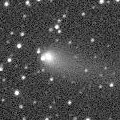
|
Now it is bright as 10.9 mag (Sept. 8, Jim Pryal). It keeps observable in good conditioni as bright as 11 mag from autumn to winter. It keeps observable, visible visually, brighter than 14 mag for a long time until 2009 May.
Date(TT) R.A. (2000) Decl. Delta r Elong. m1 Best Time(A, h)
Sept.13 5 14.05 56 2.4 2.242 2.432 88 11.3 4:38 (189, -2)
Sept.20 5 30.85 57 1.3 2.185 2.432 91 11.3 4:28 (189, -3)
|

|
Diffuse comet, but it brightened up to 9.8 mag on July 7 (Juan Jose Gonzalez). Now it is fading, but still bright as 11.2 mag (Sept. 9, Syogo Utsunomiya). In the Northern Hemisphere, it keeps observable until 2009 spring when the comet becomes faint. It will move near by the Northern Pole from summer to autumn, and will be observable all night. It will be visible visually until around October. In the Southern Hemisphere, it will never be observable again.
Date(TT) R.A. (2000) Decl. Delta r Elong. m1 Best Time(A, h)
Sept.13 12 56.54 85 3.6 1.764 1.900 81 11.3 19:13 (174,-35)
Sept.20 12 50.76 84 36.7 1.772 1.939 83 11.5 19:19 (173,-35)
|
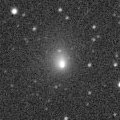
|
Brightening very rapidly, faster than expected. It is already so bright as 11.6 mag (Sept. 6, Reinder J. Bouma). Strongly condensed and easy to see. It is expected to reach to 10 mag in 2009 summer. Because it moves in the northern sky, it keeps observable until it becomes brightest in the Northern Hemisphere.
Date(TT) R.A. (2000) Decl. Delta r Elong. m1 Best Time(A, h)
Sept.13 3 12.60 74 9.2 3.992 4.199 94 11.9 3:45 (180,-19)
Sept.20 2 43.05 75 25.3 3.872 4.157 99 11.7 2:49 (180,-20)
|

|
Now it is bright as 11.5 mag (Aug. 4, Marco Goiato). It keeps bright at 12 mag for a long time from 2008 spring to 2009 spring. However, it is not observable in the Northern Hemisphere. It will appear in the northern sky again in 2009 autumn, but it will be fainter than 15 mag and will keep locating very low after that. In the Southern Hemisphere, it keeps observable for a long time until it fades out, although it becomes low in autumn.
Date(TT) R.A. (2000) Decl. Delta r Elong. m1 Best Time(A, h)
Sept.13 15 17.21 -40 58.8 2.923 2.733 69 12.2 19:13 ( 65, 49)
Sept.20 15 19.00 -42 15.8 3.004 2.716 63 12.2 19:19 ( 62, 44)
|

|
It reached to 10.9 mag in May (May 11, Marco Goiato). Now it is fading slowly. It has faded down to 12.0 mag on July 21 (Alexandre Amorim). Not observable in the Northern Hemisphere. It will be unobservable soon also in the Southern Hemisphere. In the Northern Hemisphere, it will appear in the morning sky again at 13 mag at the end of 2008, then it keeps bright and observable for a while.
Date(TT) R.A. (2000) Decl. Delta r Elong. m1 Best Time(A, h)
Sept.13 12 57.81 -2 18.1 3.749 2.859 23 12.2 19:13 ( 90, 4)
Sept.20 13 8.93 -2 6.2 3.802 2.879 19 12.3 19:19 ( 87, 0)
|

|
It had been lost for 112 years sincd 1896, but re-discovered by Koichi Itagaki and Hiroshi Kaneda. It is bright as 12.7 mag (Sept. 11, Juan Jose Gonzalez), visible visually. It should be bright temporarily in outburst now. It keeps locating high in the evening sky for a while after this, but it can fade out rapidly.
Date(TT) R.A. (2000) Decl. Delta r Elong. m1 Best Time(A, h)
Sept.13 20 42.57 -2 17.6 0.615 1.527 139 13.0 21:12 (180, 57)
Sept.20 20 53.16 -5 2.1 0.641 1.530 135 13.1 20:55 (180, 60)
|

|
It is expected to reach up to 7 mag in winter, and will be observable in good condition. However, this comet has not been observed since 1986. It is predicted to be brightening up to around 14 mag, bright enough to be recovered. However, it was not detected, fainter than 19.5 mag on Aug. 10 (Gustavo Muler), and fainter than 20 mag on Aug. 23 (Francois Kugel). It will brighten very rapidly near by the perihelion. The condition of this apparition is good. It keeps observable for a long time until 2009 early summer both in the Northern Hemisphere and Southern Hemisphere.
Date(TT) R.A. (2000) Decl. Delta r Elong. m1 Best Time(A, h)
Sept.13 19 32.89 -24 33.7 0.959 1.706 120 14.2 20:02 (180, 80)
Sept.20 19 32.59 -24 2.9 0.958 1.644 113 13.5 19:34 (180, 79)
|
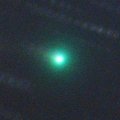
|
It brightened up to 9.2 mag on July 15 (Juan Jose Gonzalez). It was bright as 10.9 mag still on Aug. 9 (Juan Jose Gonzalez). However, it is fading rapidly after mid August. It is already invisible visually, fainter than 13.1 mag (Sept. 9, Seiichi Yoshida). It has already faded down to 14.9 mag on Sept. 9 by CCD (Ken-ichi Kadota). However, the location will be better after this. It keeps observable by CCD until it fades out in winter.
Date(TT) R.A. (2000) Decl. Delta r Elong. m1 Best Time(A, h)
Sept.13 7 54.59 26 7.0 1.829 1.500 55 13.7 4:38 (229, 9)
Sept.20 8 10.26 25 43.3 1.840 1.566 58 14.2 4:28 (230, 9)
|

|
Small outburst occured on Sept. 13, and it brightened up to 14.1 mag (Albert Sanchez).
Date(TT) R.A. (2000) Decl. Delta r Elong. m1 Best Time(A, h)
Sept.13 7 59.18 24 7.3 6.605 6.061 53 14.0 4:38 (232, 9)
Sept.20 8 3.37 23 54.7 6.513 6.063 59 13.9 4:28 (230, 12)
|

|
Now it is 15.1 mag (Aug. 1, John Drummond). It is not observable in the Northern Hemisphere now, but observable in good condition in the Southern Hemisphere. It is expected to brighten up to 10 mag from late 2009 to early 2010. Because the comet moves in the southern sky for a long time, it keeps impossible or very hard to observe in the Northern Hemisphere until 2009 September. But after 2009 October, it is observable at 10 mag for a while in good condition. In the Southern Hemisphere, it keeps observable for a long time while brightening until 2009 June when it brightens to 11 mag. But it becomes unobservable around and after the brightest time.
Date(TT) R.A. (2000) Decl. Delta r Elong. m1 Best Time(A, h)
Sept.13 6 2.03 -43 14.8 4.620 4.657 85 14.3 4:38 (299, 66)
Sept.20 6 7.05 -44 16.2 4.530 4.601 87 14.2 4:28 (303, 68)
|

|
It brightened up to 12.7 mag in spring (Apr. 12, Marco Goiato). However, it has already faded down to 14.9 mag (July 22, Mitsunori Tsumura). It will never be observable again in the Northern Hemisphere. In the Southern Hemisphere, it will be unobservable in October, but it will appear again in the morning sky at 15 mag in winter.
Date(TT) R.A. (2000) Decl. Delta r Elong. m1 Best Time(A, h)
Sept.13 13 38.19 -22 40.3 3.656 2.984 41 14.3 19:13 ( 78, 24)
Sept.20 13 48.96 -24 7.0 3.712 2.990 38 14.3 19:19 ( 74, 20)
|

|
It was 15 mag on Jan. 14 (Michael Mattiazzo), brightening as expected. It should have reached up to 13.5 mag in summer in the southern sky. Now it is fading. In the Southern Hemisphere, it keeps observable for a long time after this. But in the Northern Hemisphere, it is not observable now. But it will appear in the morning sky at 15 mag in November, then it keeps observable while the comet will be fading slowly.
Date(TT) R.A. (2000) Decl. Delta r Elong. m1 Best Time(A, h)
Sept.13 10 28.86 -30 53.2 3.453 2.719 37 14.5 4:38 (299, 13)
Sept.20 10 41.03 -30 36.9 3.502 2.750 35 14.6 4:28 (298, 14)
|
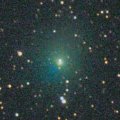
|
It reached up to 9.5 mag on Mar. 29 (Maik Meyer). Now it is fading slowly. It faded down to 10.7 mag on May 11 (Marco Goiato), and it was a diffuse object with a weak condensation. In the Northern Hemisphere, it will never be observable again. In the Southern Hemisphere, it keeps observable until it fades out. No observations have been reported recently, and the current brightness is uncertain.
Date(TT) R.A. (2000) Decl. Delta r Elong. m1 Best Time(A, h)
Sept.13 11 15.16 -48 8.4 2.945 2.456 51 14.5 4:38 (318, 16)
Sept.20 11 33.46 -50 23.0 3.031 2.532 51 14.7 4:28 (320, 17)
|

|
Now it is 12.6 mag (Sept. 6, Juan Jose Gonzalez), bright and visible visually. It will be getting lower in the evening sky after this, and will be too low to observe in October. But it will locate high again in winter, and will be visible visually at 14 mag.
Date(TT) R.A. (2000) Decl. Delta r Elong. m1 Best Time(A, h)
Sept.13 14 52.63 19 36.9 6.409 5.859 52 14.6 19:13 (125, 13)
Sept.20 14 53.21 19 17.2 6.493 5.875 48 14.6 19:19 (120, 7)
|

|
An outburst occured in late May, and it brightened up to 14.6 mag (May 23, Gustavo Muler). However, it faded down to the original brightness in late May. Now it is 16.6 mag (Sept. 11, Yasukazu Ikari). It will reach to 14 mag in autumn, but it locates extremely low in the Northern Hemisphere. In late August, some visual observers reported it was around 12.5 mag.
Date(TT) R.A. (2000) Decl. Delta r Elong. m1 Best Time(A, h)
Sept.13 14 31.27 -9 3.1 1.689 1.264 48 14.9 19:13 ( 98, 27)
Sept.20 14 53.18 -12 35.1 1.694 1.256 47 14.8 19:19 ( 93, 27)
|

|
It had been so faint as 18 mag until July. However, an outburst occured on Aug. 3 and brightened up to 14.5 mag (Gustavo Muler). But it is already fading. It has already faded down to 15.4 mag (Sept. 13, Gustavo Muler). It will be too low to observe in October.
Date(TT) R.A. (2000) Decl. Delta r Elong. m1 Best Time(A, h)
Sept.13 15 7.25 -4 58.7 3.732 3.281 56 15.0 19:13 (108, 32)
Sept.20 15 14.76 -6 12.3 3.787 3.260 51 15.2 19:19 (102, 28)
|
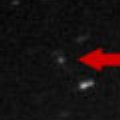
|
Now it is 16.2 mag (Aug. 3, Ken-ichi Kadota). It keeps observable while the comet will be brightening gradually after this. It will reach up to 14.5 mag in autumn. However, then it locates low in the evening sky, and it will be unobservable soon in December.
Date(TT) R.A. (2000) Decl. Delta r Elong. m1 Best Time(A, h)
Sept.13 16 10.72 -10 9.8 2.272 2.190 72 15.2 19:13 (116, 47)
Sept.20 16 21.47 -11 2.0 2.306 2.152 68 15.1 19:19 (110, 44)
|
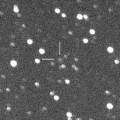
|
Now it is 15.3 mag (Sept. 7, Ken-ichi Kadota). It will be observable at 15 mag in good condition in next autumn. It is also observed visually at 14.5 mag (Sept. 9, Seiichi Yoshida).
Date(TT) R.A. (2000) Decl. Delta r Elong. m1 Best Time(A, h)
Sept.13 3 36.52 23 39.7 2.824 3.347 112 15.2 4:08 (180, 31)
Sept.20 3 23.05 23 50.9 2.705 3.355 122 15.2 3:27 (180, 31)
|
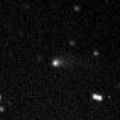
|
Now it is 15.6 mag (Aug. 7, Ken-ichi Kadota). It locates somewhat low in the Northern Hemisphere, but it keeps observable around 16 mag until winter. It is also observed visually at 14.6 mag (Aug. 6, Juan Jose Gonzalez).
Date(TT) R.A. (2000) Decl. Delta r Elong. m1 Best Time(A, h)
Sept.13 20 57.49 -28 10.2 2.094 2.914 137 15.6 21:26 (180, 83)
Sept.20 20 55.49 -27 33.8 2.148 2.903 130 15.7 20:56 (180, 82)
|

|
Now it is 15.4 mag (Sept. 7, F. Garcia). It will be brightening gradually after this, and reach to 12-13 mag in 2009 winter and spring. In the Northern Hemisphere, it keeps observable for a long time until 2009 May.
Date(TT) R.A. (2000) Decl. Delta r Elong. m1 Best Time(A, h)
Sept.13 20 51.92 -29 16.7 1.398 2.231 135 15.8 21:20 (180, 84)
Sept.20 20 47.03 -29 9.8 1.409 2.178 128 15.7 20:48 (180, 84)
|

|
Now it is 15.4 mag (Sept. 5, S. Sanchez et al.). It will be observable at 16 mag in good condition in autumn.
Date(TT) R.A. (2000) Decl. Delta r Elong. m1 Best Time(A, h)
Sept.13 3 25.36 12 21.2 1.438 2.109 118 15.8 3:57 (180, 43)
Sept.20 3 30.11 12 3.6 1.380 2.111 123 15.8 3:34 (180, 43)
|

|
Now it is 15.2 mag (Aug. 2, Ken-ichi Kadota). Now it is brightest, and it will be fading after this. It keeps observable in good condition until it fades out in winter. The position is very different from the original prediction. It is also observed visually at 14.0 mag (Sept. 7, Juan Jose Gonzalez).
Date(TT) R.A. (2000) Decl. Delta r Elong. m1 Best Time(A, h)
Sept.13 4 35.66 16 47.1 1.414 1.881 100 16.0 4:38 (189, 38)
Sept.20 4 42.94 17 5.5 1.376 1.910 105 16.1 4:28 (186, 38)
|
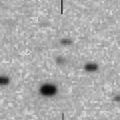
|
Now it is 16.4 mag (Aug. 31, J. A. Henriquez). Brightened rapidly, and it still keeps brightening even after passing the perihelion. It will be observable at 16 mag in good condition until November.
Date(TT) R.A. (2000) Decl. Delta r Elong. m1 Best Time(A, h)
Sept.13 1 2.01 28 27.0 1.464 2.328 140 16.1 1:34 (180, 26)
Sept.20 1 1.13 27 13.3 1.428 2.335 146 16.1 1:05 (180, 28)
|

|
Now it is 17.2 mag (Sept. 10, Ken-ichi Kadota). It will brighten rapidly after this. It will be observable at 12-13 mag for a long time from January to July in 2009.
Date(TT) R.A. (2000) Decl. Delta r Elong. m1 Best Time(A, h)
Sept.13 8 15.96 22 52.9 3.515 2.962 49 16.6 4:38 (235, 7)
Sept.20 8 26.34 22 23.1 3.414 2.936 53 16.4 4:28 (235, 9)
|
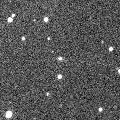
|
Getting higher gradually in the morning sky. It will be observable at 15 mag in good condition in winter.
Date(TT) R.A. (2000) Decl. Delta r Elong. m1 Best Time(A, h)
Sept.13 8 38.03 22 7.1 4.374 3.722 44 16.6 4:38 (239, 4)
Sept.20 8 46.22 21 45.2 4.292 3.715 49 16.6 4:28 (238, 6)
|

|
Not recovered yet. But now it should be brightening up to 18 mag. It will reach up to 16 mag in October and November, and will be observable in good condition. It keeps observable in the morning sky until January when it will be fainter than 18 mag.
Date(TT) R.A. (2000) Decl. Delta r Elong. m1 Best Time(A, h)
Sept.13 6 33.11 17 58.8 1.096 1.247 72 17.2 4:38 (219, 27)
Sept.20 7 9.31 16 10.2 1.044 1.185 70 16.8 4:28 (224, 26)
|
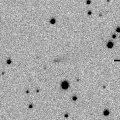
|
Now it is 17.5 mag (Aug. 31, Michael Jager). Recovered as bright as expected. It will getting higher, but will be fading gradually after this. It will be fainter than 18 mag in December.
Date(TT) R.A. (2000) Decl. Delta r Elong. m1 Best Time(A, h)
Sept.13 8 23.09 23 52.3 1.875 1.419 48 16.9 4:38 (236, 6)
Sept.20 8 45.16 22 55.5 1.872 1.446 49 17.0 4:28 (237, 5)
|

|
It will be observable at 16.5-17 mag in good condition in autumn. It will be fainter than 18 mag in February.
Date(TT) R.A. (2000) Decl. Delta r Elong. m1 Best Time(A, h)
Sept.13 18 27.37 19 37.8 1.615 2.091 103 16.9 19:13 (175, 35)
Sept.20 18 30.06 20 5.3 1.642 2.055 99 16.9 19:19 (167, 34)
|

|
Now it is 17.6 mag (Aug. 30, R. Naves, M. Campas). Because it passes near by the earth, it brightens rapidly and reaches up to 16.5 mag in October. However, it fades out soon and will be fainter than 18 mag in late December.
Date(TT) R.A. (2000) Decl. Delta r Elong. m1 Best Time(A, h)
Sept.13 2 1.90 5 30.6 0.515 1.438 139 17.1 2:33 (180, 49)
Sept.20 2 12.63 6 30.1 0.479 1.419 143 16.9 2:16 (180, 48)
|

|
It was bright as 16.0 mag on June 30 (Michael Jager). Now it is 17.1 mag (Aug. 15, Ken-ichi Kadota). It keeps observable in good condition after this in the Northern Hemisphere. It will be fading gradually, and will be fainter than 18 mag in November.
Date(TT) R.A. (2000) Decl. Delta r Elong. m1 Best Time(A, h)
Sept.13 22 23.49 58 20.0 2.109 2.714 116 17.0 22:51 (180, -3)
Sept.20 22 14.29 58 15.1 2.154 2.767 117 17.1 22:14 (180, -3)
|
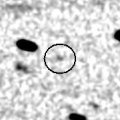
|
Now it is 17.5 mag (Sept. 13, A. Sanchez). It will be observable at 16 mag in good condition from autumn to winter.
Date(TT) R.A. (2000) Decl. Delta r Elong. m1 Best Time(A, h)
Sept.13 2 36.04 28 4.3 2.005 2.701 124 17.1 3:08 (180, 27)
Sept.20 2 36.66 28 42.7 1.916 2.677 130 17.0 2:41 (180, 26)
|

|
Now it is 17.8 mag (Aug. 3, Ken-ichi Kadota). It will brighten up to 12 mag in 2012. It is faint still in 2008, but observable at 17 mag in good condition.
Date(TT) R.A. (2000) Decl. Delta r Elong. m1 Best Time(A, h)
Sept.13 23 5.51 6 46.3 9.474 10.461 168 17.1 23:33 (180, 48)
Sept.20 23 1.97 6 25.5 9.447 10.424 165 17.1 23:02 (180, 49)
|

|
It was observed at 16.5-17 mag in 2007 autumn. Now it is 17.3 mag (July 2, J. F. Hernandez). It will be observable at 17 mag for a long time from summer to autumn.
Date(TT) R.A. (2000) Decl. Delta r Elong. m1 Best Time(A, h)
Sept.13 4 58.32 27 59.1 2.333 2.605 94 17.1 4:38 (193, 26)
Sept.20 5 3.51 28 10.7 2.270 2.633 99 17.1 4:28 (190, 26)
|

|
It was observed at 17.5-18 mag in 2006 and 2007. In 20080, it will be observable at 17.5-18 mag from summer to autumn.
Date(TT) R.A. (2000) Decl. Delta r Elong. m1 Best Time(A, h)
Sept.13 22 32.91 -24 48.1 3.226 4.163 155 17.3 23:01 (180, 80)
Sept.20 22 29.55 -25 16.0 3.273 4.166 148 17.4 22:30 (180, 80)
|
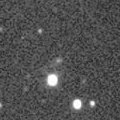
|
Observable at 17.5 mag in autumn. Because it is a distant comet, it will be observable at 17.5 mag in 2009 autumn again. Although it locates low this year, it will locate high and observable in good condition in 2009.
Date(TT) R.A. (2000) Decl. Delta r Elong. m1 Best Time(A, h)
Sept.13 21 3.89 -17 33.9 3.027 3.877 142 17.5 21:32 (180, 73)
Sept.20 21 1.62 -17 30.1 3.092 3.872 135 17.5 21:02 (180, 72)
|

|
It reached up to 16 mag last winter. Now it is fading, but it will be observable at 17.5 mag in good condition from autumn to winter.
Date(TT) R.A. (2000) Decl. Delta r Elong. m1 Best Time(A, h)
Sept.13 5 5.84 14 38.3 5.405 5.561 93 17.6 4:38 (198, 38)
Sept.20 5 6.30 15 2.3 5.327 5.594 100 17.6 4:28 (193, 39)
|
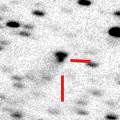
|
It was observed at 16.5-17 mag in 2006 and 2007. Because it is a very distant comet, it is observable at 17 mag still in 2008 in good condition.
Date(TT) R.A. (2000) Decl. Delta r Elong. m1 Best Time(A, h)
Sept.13 17 33.00 41 13.5 6.500 6.560 89 17.7 19:13 (166, 12)
Sept.20 17 30.91 40 35.6 6.582 6.582 85 17.8 19:19 (160, 11)
|

|
Peculiar asteroid moving along a cometary orbit with a period of 40 years. It will be observable at 17.5 mag in good condition from August to September. It has already passed the perihelion in May.
Date(TT) R.A. (2000) Decl. Delta r Elong. m1 Best Time(A, h)
Sept.13 22 1.94 7 57.4 2.218 3.165 156 17.8 22:30 (180, 47)
Sept.20 21 58.09 8 9.4 2.271 3.184 150 17.9 21:59 (180, 47)
|
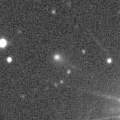
|
It was observed as bright as 14-15 mag in 2007 autumn. It will be observable at 17.5 mag in good condition from autumn to winter in 2008.
Date(TT) R.A. (2000) Decl. Delta r Elong. m1 Best Time(A, h)
Sept.13 7 32.98 31 15.1 3.485 3.122 60 17.8 4:38 (222, 8)
Sept.20 7 42.00 31 9.4 3.424 3.147 65 17.8 4:28 (221, 9)
|

|
It keeps 17.5-18 mag for a long time until early summer in 2009. It becomes low in December, but it is observable in good condition except for that time.
Date(TT) R.A. (2000) Decl. Delta r Elong. m1 Best Time(A, h)
Sept.13 17 58.94 43 14.9 2.923 3.150 93 17.8 19:13 (171, 11)
Sept.20 17 48.24 40 49.8 2.980 3.127 88 17.8 19:19 (163, 12)
|

|
It will brighten up to 15 mag in 2009 and 2010. In this autumn, it is observable at 17.5 mag in good condition.
Date(TT) R.A. (2000) Decl. Delta r Elong. m1 Best Time(A, h)
Sept.13 22 28.52 18 20.1 3.688 4.613 153 18.0 22:56 (180, 37)
Sept.20 22 18.26 18 6.6 3.663 4.563 150 17.9 22:18 (180, 37)
|

|
Now it is 19.4 mag (Sept. 11, C. Rinner, F. Kugel). It was origibally expected to reach up to 10 mag in winter based on the brightness at the discovery. However, it is actually much fainter than expected, and will be only 16 mag at best. It keeps observable in good condition for a long time until next spring.
Date(TT) R.A. (2000) Decl. Delta r Elong. m1 Best Time(A, h)
Sept.13 3 6.68 21 43.3 1.347 2.046 120 19.3 3:38 (180, 33)
Sept.20 3 13.32 22 9.8 1.242 1.998 125 19.0 3:17 (180, 33)
|

|
It was observed at 16-17 mag at the discovery in 1999. However, it is much fainter than predicted in this apparition. Now it is 19.9 mag (Sept. 3, T. H. Bressi). It will be 18-19 mag at best.
Date(TT) R.A. (2000) Decl. Delta r Elong. m1 Best Time(A, h)
Sept.13 0 4.91 4 32.2 3.091 4.078 167 20.3 0:37 (180, 50)
Sept.20 0 0.90 4 8.9 3.059 4.059 174 20.2 0:06 (180, 51)
|

|
It was predicted to be so bright as 14 mag now. But actually, it is extremely faint as 19.5 mag (Aug. 4, Gustavo Muler). Although it locates in good condition, it will be hard to observe.
Date(TT) R.A. (2000) Decl. Delta r Elong. m1 Best Time(A, h)
Sept.13 22 4.55 15 15.8 1.725 2.658 152 20.3 22:33 (180, 40)
Sept.20 22 2.80 14 35.7 1.797 2.709 149 20.4 22:03 (180, 40)
|
|
![]()
 85P/Boethin
85P/Boethin 15P/Finlay
15P/Finlay 29P/Schwassmann-Wachmann 1
29P/Schwassmann-Wachmann 1 C/2007 Q3 ( Siding Spring )
C/2007 Q3 ( Siding Spring ) C/2007 B2 ( Skiff )
C/2007 B2 ( Skiff ) C/2006 U6 ( Spacewatch )
C/2006 U6 ( Spacewatch ) C/2008 C1 ( Chen-Gao )
C/2008 C1 ( Chen-Gao ) C/2005 L3 ( McNaught )
C/2005 L3 ( McNaught ) 7P/Pons-Winnecke
7P/Pons-Winnecke 199P/2008 G2 ( Shoemaker 4 )
199P/2008 G2 ( Shoemaker 4 ) 68P/Klemola
68P/Klemola C/2007 U1 ( LINEAR )
C/2007 U1 ( LINEAR ) 47P/Ashbrook-Jackson
47P/Ashbrook-Jackson 67P/Churyumov-Gerasimenko
67P/Churyumov-Gerasimenko 61P/Shajn-Schaldach
61P/Shajn-Schaldach 51P/Harrington
51P/Harrington P/2008 L2 ( Hill )
P/2008 L2 ( Hill ) 116P/Wild 4
116P/Wild 4 74P/Smirnova-Chernykh
74P/Smirnova-Chernykh P/2001 J1 ( NEAT )
P/2001 J1 ( NEAT ) 201P/2008 Q4 ( LONEOS )
201P/2008 Q4 ( LONEOS ) C/2008 R3 ( LINEAR )
C/2008 R3 ( LINEAR ) P/2008 Q2 ( Ory )
P/2008 Q2 ( Ory ) C/2008 J6 ( Hill )
C/2008 J6 ( Hill ) 59P/Kearns-Kwee
59P/Kearns-Kwee C/2006 S3 ( LONEOS )
C/2006 S3 ( LONEOS ) 44P/Reinmuth 2
44P/Reinmuth 2 P/2006 F1 ( Kowalski )
P/2006 F1 ( Kowalski ) P/2008 O2 ( McNaught )
P/2008 O2 ( McNaught ) C/2006 K1 ( McNaught )
C/2006 K1 ( McNaught ) C/2005 S4 ( McNaught )
C/2005 S4 ( McNaught ) 2008 JS14
2008 JS14 188P/2007 J7 ( LINEAR-Mueller )
188P/2007 J7 ( LINEAR-Mueller ) C/2008 Q1 ( Maticic )
C/2008 Q1 ( Maticic ) C/2008 N1 ( Holmes )
C/2008 N1 ( Holmes ) 144P/Kushida
144P/Kushida 203P/2008 R4 ( Korlevic )
203P/2008 R4 ( Korlevic ) C/2007 K3 ( Siding Spring )
C/2007 K3 ( Siding Spring )![]()


































